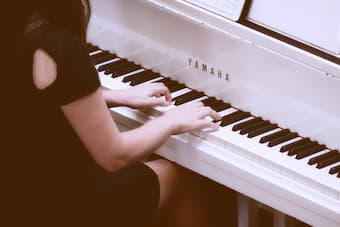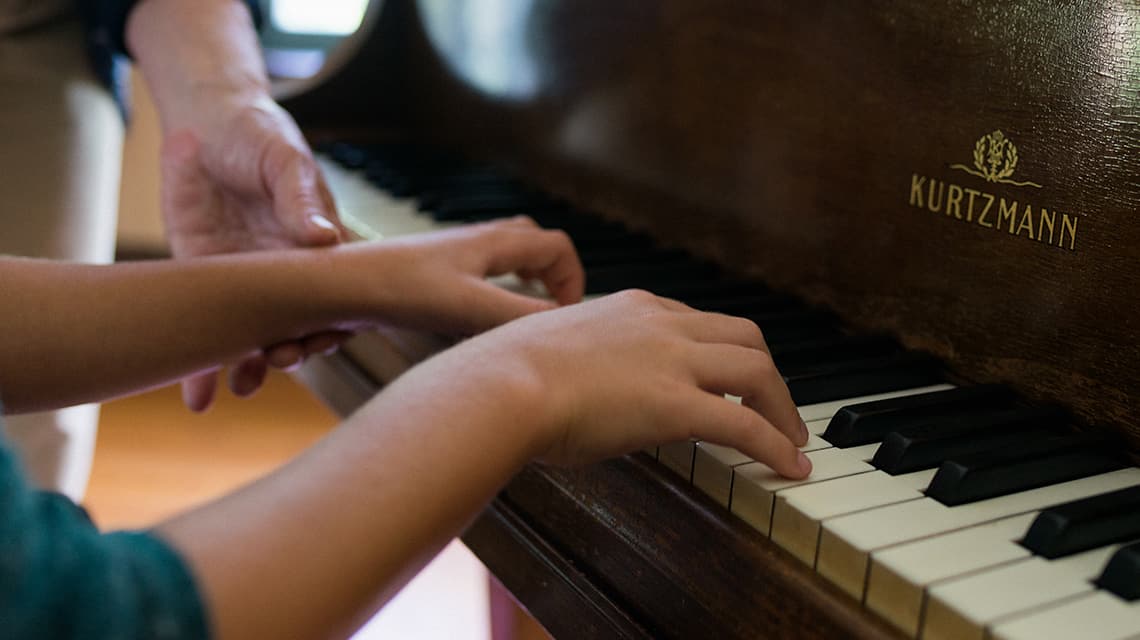When I said this to one of my students, he looked at me slightly askance from beneath his thick fringe of auburn hair, and I could see him thinking his piano teacher was probably slightly mad.
Of course we play the piano with our fingers, but these are, literally, the tips of a much larger mechanism: the wrists, arms, shoulders, back and trunk assist in the production of sound and movement, and enables the pianist to navigate the keyboard efficiently, economically and safely. During performance, the pianist conveys both the music’s narrative and his/her expressive intent to the audience through postures and movements which create the sounds and the accompanying expressive gestures.

© Wristband Resources
The Pianist’s Forearm
The use of arm weight, a concept developed by renowned pianist and pedagogue Tobias Matthay (1858 – 1945) in the early years of the twentieth century, influences sound quality by controlling how the hand drops onto the keyboard. Conversely, lifting out of the keys, again by harnessing the forearm and muscles further up the arm and shoulder, can affect articulation, such as staccato.
The Pianist’s Elbow
The elbow, often ignored by pianists and teachers, has a number of important functions, including forward and backwards movements in and out of the keyboard, particularly to and from the black keys to avoid stretching the hand and fingers; it drives the rotation of the forearm to enable the pianist to play, for example, tremolo octaves; and it enables the pianist to create elliptical, expressive movements in the forearm and hand.
The Pianist’s Wrists

© Musika
Then there is the wrist, the pianist’s most important joint. A soft wrist cushions the hand and fingers, offers protection against injury, and shapes phrasing and articulation. Rolling the wrist from side to side in a semi-circle – called “rotary movement” – gives shape to melody and accompaniments, including the Alberti Bass, releasing tension and allowing the fingers to fall onto the keys with the minimum of effort. The wrist keeps fingers in alignment with the forearm and guides the fingers to the notes, avoiding awkward stretches and unnecessary tension. Upwards wrist movements give lift and lightness to sounds, creating breathing space between phrases as the fingers lift out of the keys. Dropping the wrist into the keyboard, using the weight of the forearm, brings emphasis to accents while avoiding striking the keys too harshly, creates a rich sounds, and is essential for healthy playing of chords, especially in the louder dynamic range, by acting as a shock absorber.
The Pianist’s Back and Shoulders
The back and shoulders assist in creating a rich forte, especially for pianists with smaller hands. By engaging the stronger, large muscles of the back and shoulders to support the hands and fingers, the pianist can play more expressively.
While a proper understanding of how fingers, hand, wrist, forearm, elbow, shoulders and back are employed to support technical facility and protect against injury, it is important to appreciate how these parts of the pianist’s body are also harnessed in the artistry of playing, including sound quality, gesture and communication. Such movements also resonate with audiences, who perceive such movements as expressive, thus creating a more empathetic engagement with the music being played.
